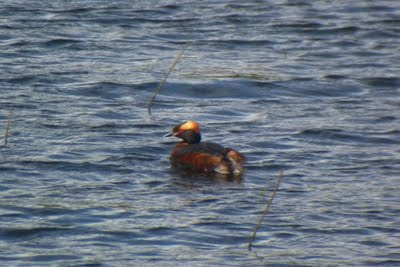Black-necked and Slavonian Grebes; fantastic birds, and would be even better with decent photos.
I have the task of writing an action plan for Black-necked Grebe. Hmm, what do you do for something that is considered more League Two than Premier when it comes to conservation ranking? Black-necked and Slavonian (which definitely does get a high ranking) form an interesting comparison pair and I’ve looked at breeding sites of both species this summer. Both broadly like highly productive, shallow, open waters, with marginal and submerged aquatic vegetation.
The more southerly BNG likes its open waters to be larger than the Slav in general, more nutrient-rich, and sometimes ephemeral. The ephemeral bit is interesting. Breeding birds frequently appear on shallow floods, and floodplain habitats are used extensively in other parts of the world. So, one option would be to create shallow lakes or meres, which would have the added benefit of being highly attractive to a wide range of birds. So perhaps this is the BNGs relevance to conservation in the UK – it represents a largely missing habitat type.
However, it is the quality of the marginal and submerged vegetation that seems to be important for both these grebes, as this has a direct influence on the key threats to nest survival in both; nest flooding in spells of poor (windy) weather, and predation. So that’s it; create shallow meres with luxuriant aquatic vegetation. Job done.
I was feeling a bit cheerful today so I decided to take the edge off that with a visit to the Girling Res. For once, the site turned up trumps; a flock of 36 BNGs. This early return of adults, with just 4 young birds amongst them, not only hints at a poor breeding season but also provides a clue as to where these birds are coming from.




